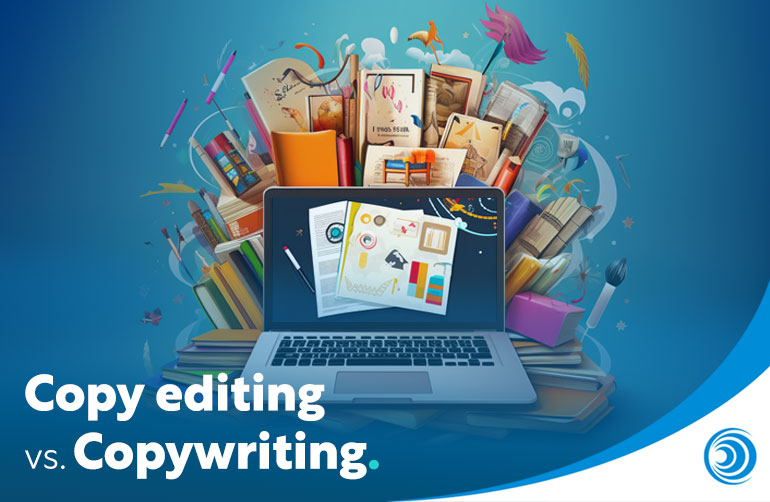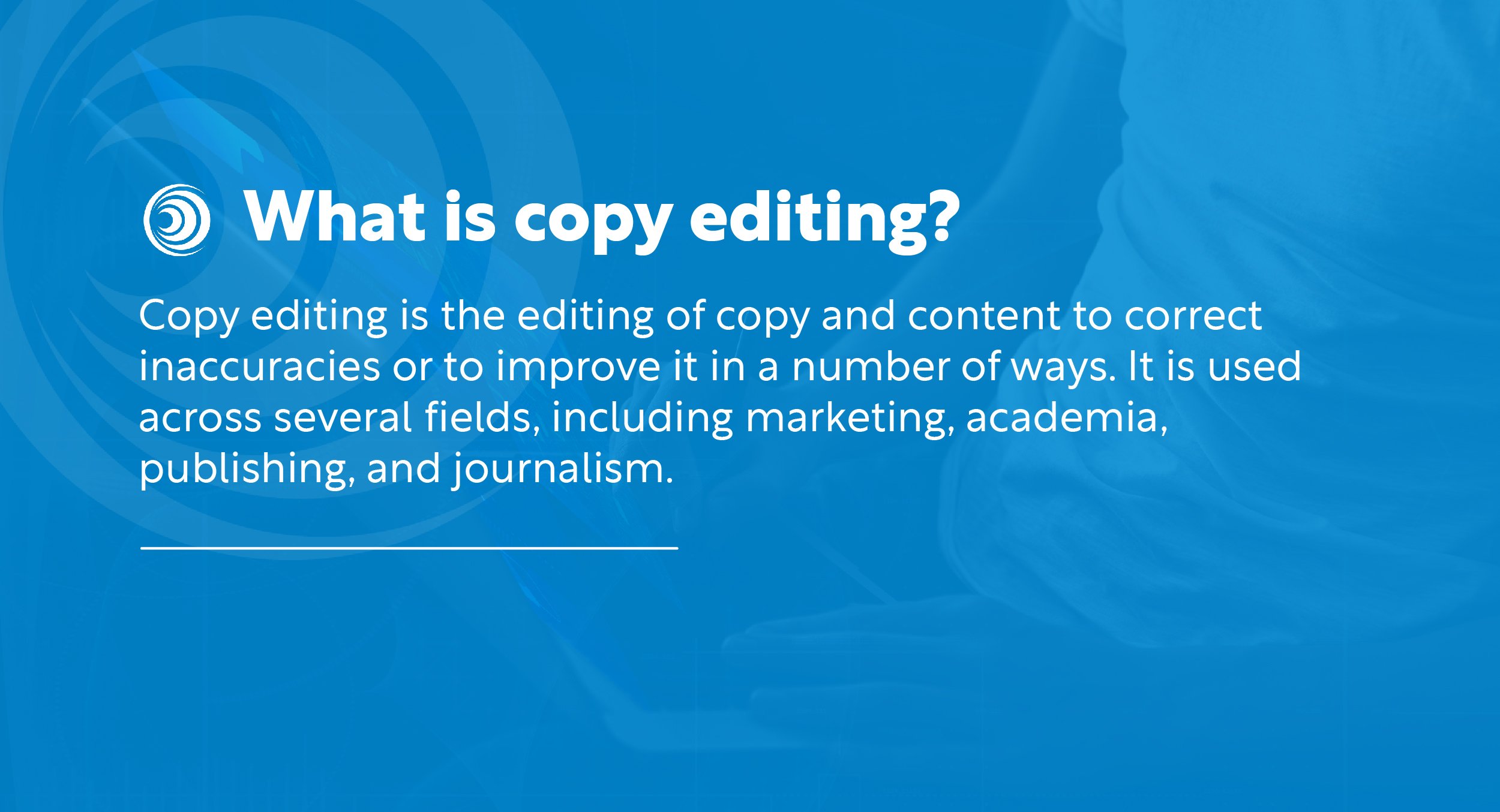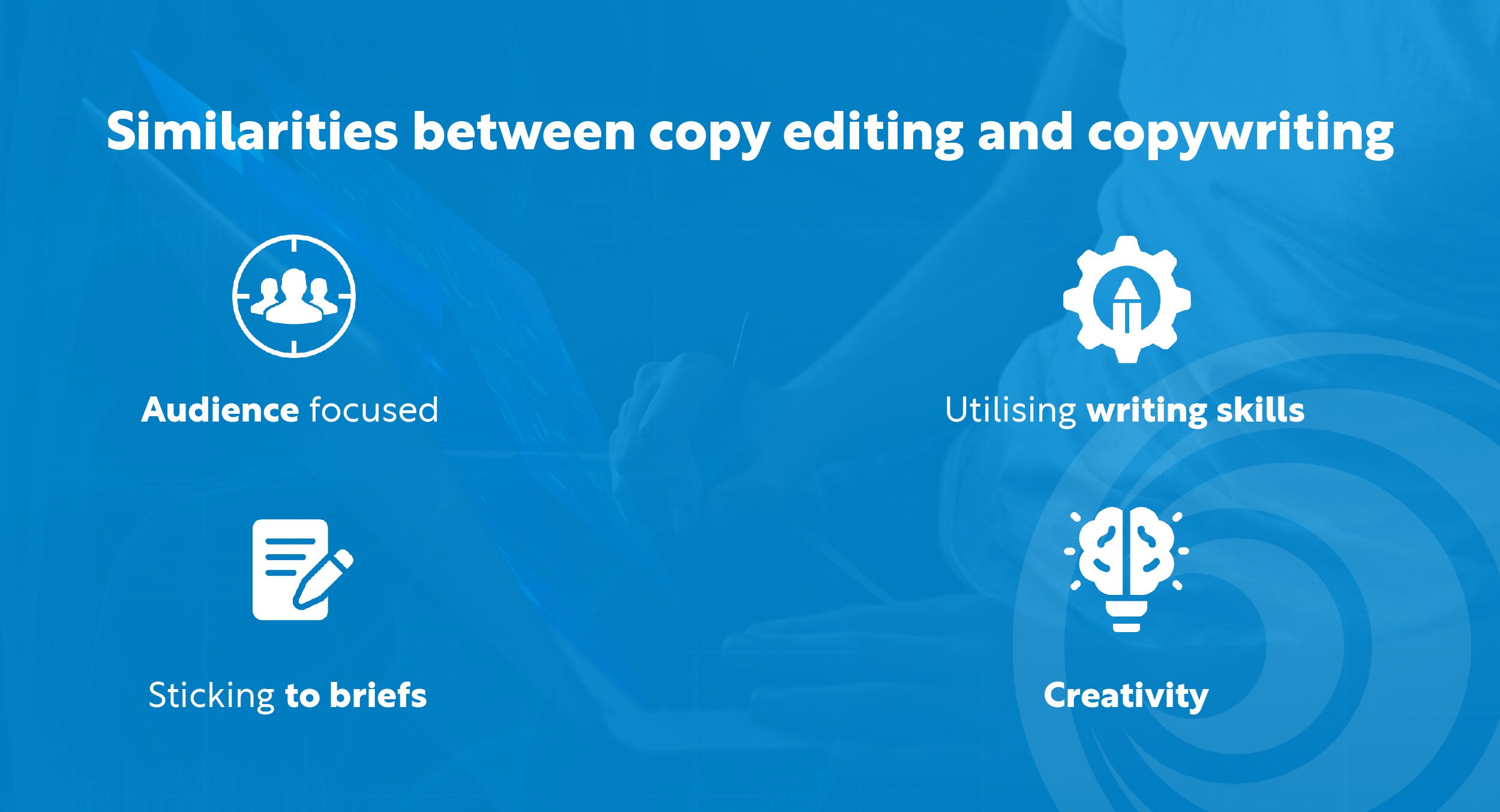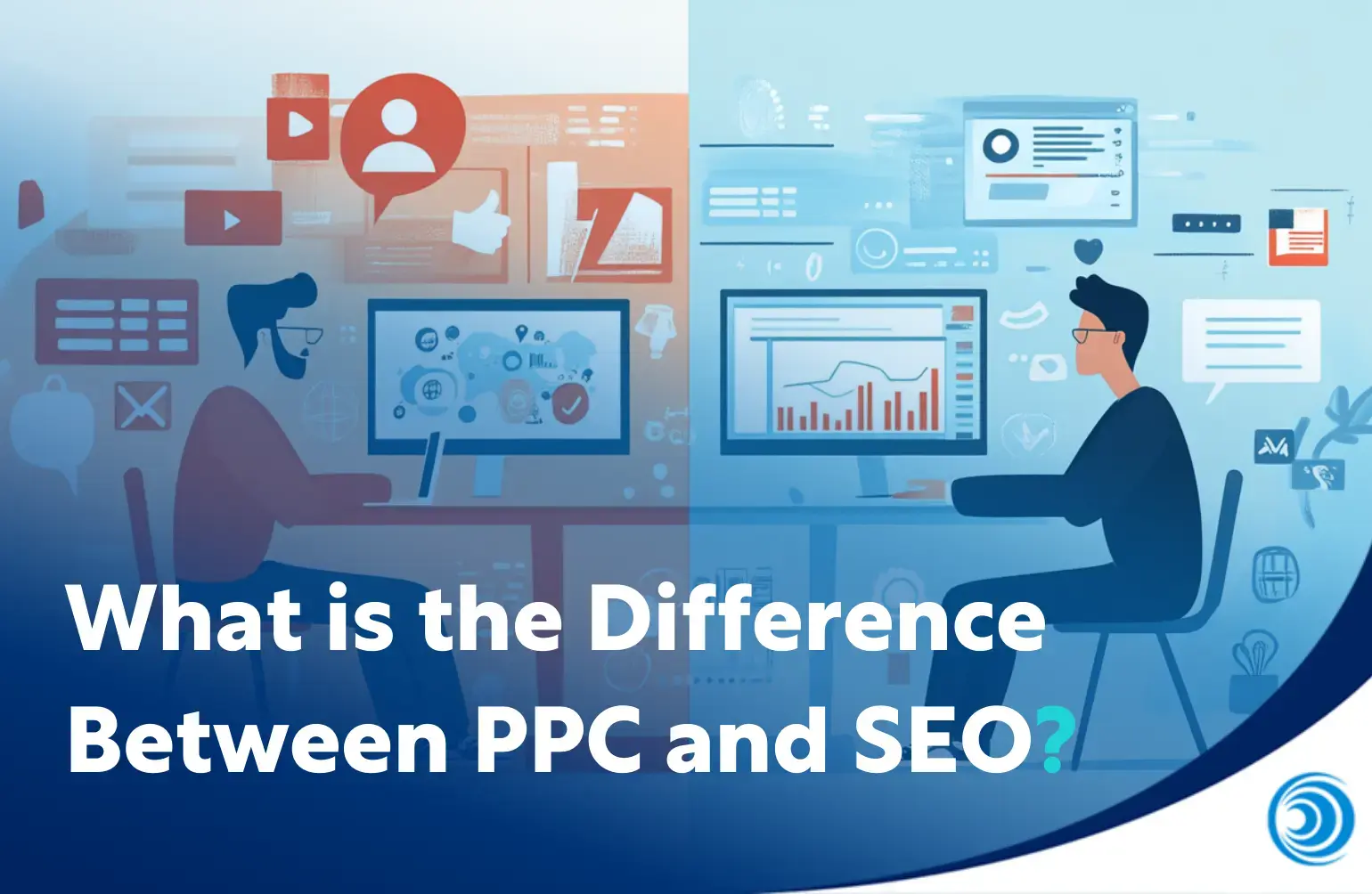
Understanding Copy editing vs. Copywriting
[UPDATED FEBRUARY 2025] Division of labour often makes things more efficient and better quality.
The same applies to the copywriting process.
Having a separate copywriter, copy editor, and proofreader is essential. Let's look at the similarities and differences between these roles.
What is 'copy'?
Copy refers to specialised text. It can be subdivided into a number of categories. In specialised areas, such as policy listings, manuals, instructions, etc., it is often classed as legal or technical copy.
In journalism, it simply means text for reports or articles (but journalists that create it are not considered copywriters).
In this article, we will be speaking about marketing copy. This is text used to represent a brand. It appears in many different formats, including:
-
Slogans
-
Brochures
-
Physical and online ads
-
Website pages (text used on service and landing pages)
and more.
By contrast, text used for direct communications (like customer support) is not generally considered copy.
Why is it called copy?
In English, usage of the word copy in its current form began in the 15th century. At the time, printing was still not widespread in Europe, so text had to be physically copied out by hand.
So, when copywriting was invented (or emerged), it was strongly associated with the process of copying text by hand.
What is copywriting?
Copywriting is the process of writing copy. In marketing and advertising, it is for creating compelling and persuasive content that promotes a brand and its products and services.
This means that with copywriting, a lot more time is spent thinking and rewriting than in other forms of writing.
Copywriting is sometimes done by external full-time copywriters. They can be generalists or industry specialists. Other times, it is carried out by employees within a company or organisation, often from the marketing department.
Either way, they need an understanding of the brand and its target audience alongside the skill of creating memorable and compelling copy.
They write content that aligns with the brand's goals and meets client expectations, producing various types of materials tailored to the business's objectives, including persuasive copy aimed at motivating consumer actions.
Their brief might be set by sales, marketing, or other parties. It might be detailed in general, and its objective can vary widely.
Understanding why copywriting is important depends in part on what this set objective is.
For example, it could be to create copy that reflects the company's desired brand image. Or to motivate existing or potential customers to take a specific action (making a purchase, signing up for a newsletter, clicking a link, etc.).
Difference between copywriting and content writing
Copywriting and content writing are often mixed up even though they serve distinct marketing functions.
Copywriting is crafted for immediate impact, prompting readers to take sales-driven actions. By contrast, content writing educates readers over a longer term, building trust to eventually drive sales.
The writing styles differ, too. Copywriting is often concise and may deviate from traditional grammar for effect (like Apple's 'Think Different').
By contrast, content writing should generally be more detailed and grammatically precise. The purpose of blogging, for example, is to convey information rather than advertise a brand.
Finally, in terms of focus, copywriters focus on creativity and human psychology, whilst content writers emphasise deep research and clarity.
Examples of famous copywriters
Rosser Reeves (1910 - 1984) was an influential American advertising executive. He emphasised clear, memorable writing that highlighted products' distinctive benefits. He is known for creating the concept of the Unique Selling Proposition (USP).
Reeves' strategies transformed advertising and left a lasting legacy in the industry's approach to persuasive communication.
Mary Wells Lawrence (b. 1928) is a pioneering figure in advertising. As a co-founder of Wells Rich Greene agency, she worked on many innovative campaigns for brands like Braniff and Alka-Seltzer. Her creative copywriting has earned her a place in the Advertising Hall of Fame.
What is copy editing?

Copy editing (sometimes written as copy-editing or copyediting) is the editing of copy and content to correct inaccuracies or to improve it in a number of ways. It is used across several fields, including marketing, academia, publishing, and journalism.
In marketing, the improvements involved might be light or extensive. They could involve tweaking wording, adjusting tone and style, or completely re-writing whole sections.
A copy editor focuses on keeping a consistent style or tone and adherence to established guidelines. Their role often - but not always - involves sending feedback to the original copywriter for further edits.
They might have the final say on approval or simply the final say on approving when it can be sent for approval and then proofreading.
Copy editing vs proofreading
The difference between copy editing and proofreading lies in their objectives. Copy editing aims to enhance copy's clarity, style, tone, and structure. Proofreading aims to check for errors in grammar, spelling, punctuation mistakes, and other formatting issues.
Examples of famous copy editors
Allan Marshall Siegal (1940 – 2022) was an American journalist who served at The New York Times for 45 years. He started as a 'copy boy' (errand runner for journalists) in 1960 before rising through the ranks and finding his true passion: editing.
He played a pivotal role in the Pentagon Papers and many other reports. He co-authored The New York Times' stylebook and ethics manual and introduced the first computer system in its newsroom. He retired in 2006.
Russell Lynes (1910-1991) was an American art historian, author, and managing editor of Harper's Magazine for two decades. He once stated:
No author dislikes to be edited as much as he dislikes not to be published.
Similarities between copy editing and copywriting

1. Audience-focused
Both copywriting and copy editing require a good understanding of the copy's target audience. They need this to ensure that copy resonates with the intended readers.
2. Utilising writing skills
Good overall writing ability is essential for both copywriting and copy editing. This covers the ability to write in different tones and styles as well as more basic skills like a good grasp of grammar, punctuation, and vocabulary.
3. Sticking to briefs
The customer is always right. Both a copywriter and professional editor need to keep customers' requirements at the forefront of their mind whilst working. This requires experience and a nuanced understanding of briefs, brands, and industries.
In some cases, copywriters create original content with full scope for style, tone, etc. In these instances, the copy editor needs to help them ensure the final product reaches its full potential. This might be achieved with suggestions rather than direct edits.
4. Creativity
There is always a need to create content that matches businesses' established or planned branding. However, even within this remit, there is often scope for creative writing.
After all, copywriting for marketing is a creative art. Without creativity, a good copywriter will be unlikely to help the brand achieve much.
Differences between copywriting and copy editing
1. Research skills
Copywriting usually relies on more research than copy editing.
The copy editing process naturally exposes copy editors to the copywriter's research (in its final form). It is inefficient to have them both research the same topic in equal depth beforehand.
In practice, the copy editor sometimes asks for clarity on points in the copywriter's work. This is more effective than the copy editor repeating the same research.
2. Creating vs refining
Copywriters primarily focus on generating new copy. Copy editors focus on making corrections and revisions to existing copy.
This distribution of labour works well for both specific projects and across projects.
3. Responsibility
The responsibility for copy often ultimately lies with copy editors.
If they feel they are working with an inadequate copywriter in the first instance, they need to address this early on. And if they are working with a skilled copywriter, they need to ensure they get the best copy from them.
Why do good copywriting and copy editing matter?
Copywriting and copy editing can make or break an advert, campaign, or even brand.
The significance of the written word lies in its ability to enhance content for better readability and conversion rates.
Together, they can create compelling, consistent, and polished content that resonates with audiences, encourages action, and strengthens brand reputation.
The highest level copywriters charge a lot for their work. Clayton Makepeace, for example, is said to have charged 18K dollars a day for his services. But when you consider the hundreds of millions in profit generated by campaigns he has worked on, this cost seems justified.
Successful copy editors are equally important. They ensure that copywriters' work is consistent and reaches its full potential.
Conclusion
In marketing, copy's purpose is to captivate attention and guide specific responses from its intended audience.
Copywriters work to a range of different briefs. These are often based on reflecting a brand's image or motivating specific customer actions.
Their work often overlaps with content writing. However, it does have its own distinctive short-term goals. Some iconic copywriters, like Rosser Reeves and Mary Wells Lawrence, have left indelible marks on advertising.
Meanwhile, a good copy editor refines copywriters' work, ensuring consistency and adherence to guidelines. This is different to proofreading, which primarily corrects errors.
A professional copy editor, like Allan Marshall Siegal and Russell Lynes, will significantly impact copy's quality. This will increase audience resonance and brief adherence.
The main divergence between the two roles lies in research depth and their primary roles—creation versus refinement. Cohesion between them ensures the delivery of polished, powerful copy that exceeds customer expectations.
Partner with Blue Train Marketing for professional copywriting and copy editing solutions that captivate your audience, reflect your unique brand identity, and drive results. Get in touch today to supercharge your marketing efforts!



